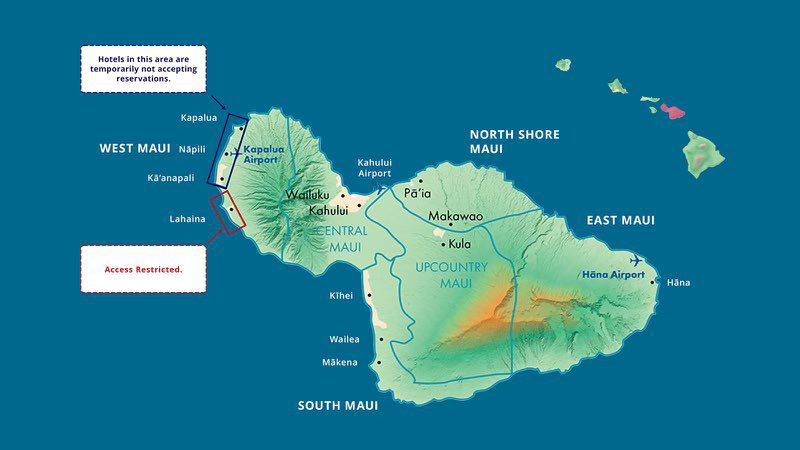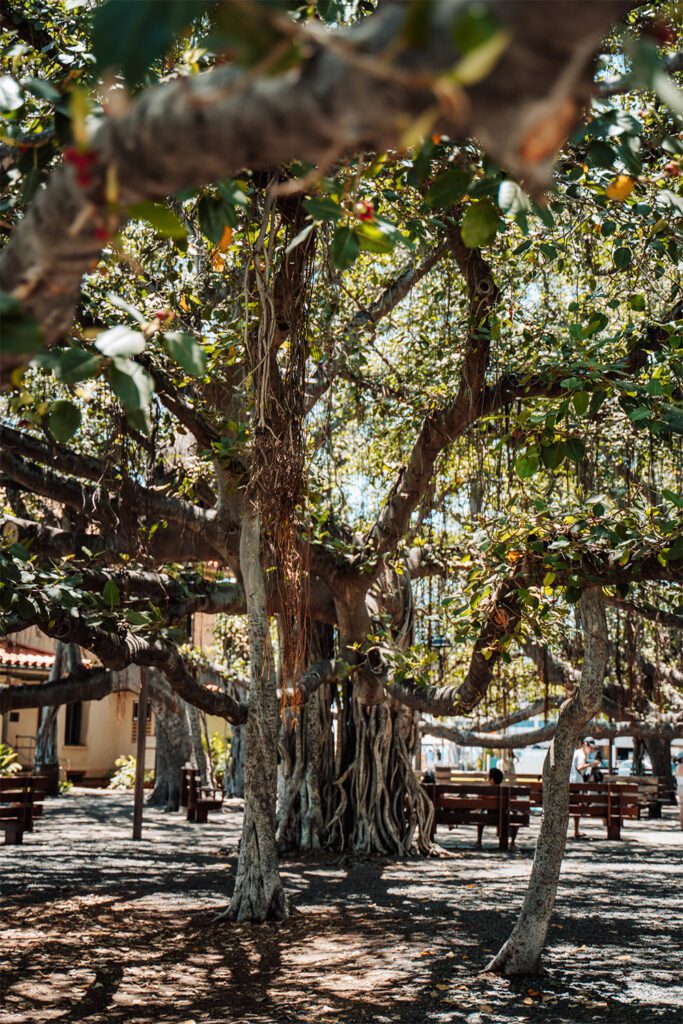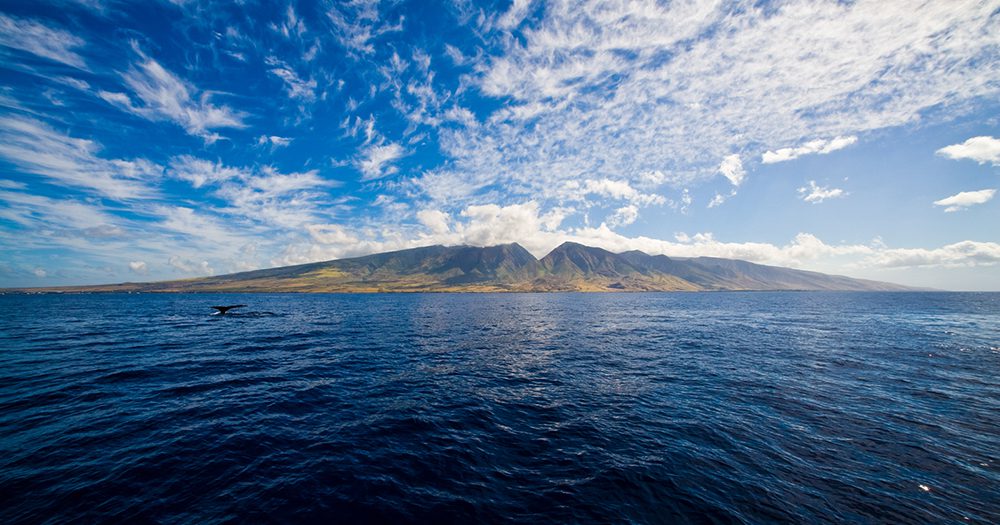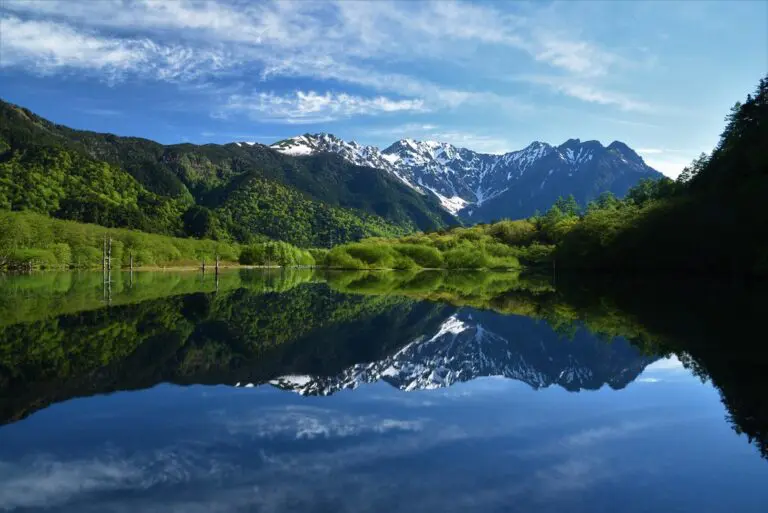As Hawaiʻi and the rest of the world come to terms with the devastating wildfires in West Maui, we’ve learned that Lahaina, the original capital of the Hawaiian Kingdom, has been significantly impacted. The loss of loved ones, homes, businesses and cultural and historical sites cannot be understated. Read on to discover how Lahaina’s heart and strength will support this beloved town’s recovery efforts.

Nestled on the western coast of Maui, Lahaina is a destination rich in history, natural beauty, and cultural significance. Over two hundred years ago, King Kamehameha I unified the islands, making Lahaina its capital.
Over the two centuries that followed, the people of Lahaina – with their aloha, dedication, and hard work – built their town into a special place. This unique and vibrant community not only drew travellers from afar, but artists and musicians, too. Everyone was entranced by Lahaina’s beauty, culture, and rich history.
Did you know that Lahaina housed over 60 significant sites, museums, and buildings representing more than 500 years of the town’s history and culture?
The heart of a new era
Lahaina’s historical significance predates the unification of Hawaiʻi. In 1795, King Kamehameha I triumphed over Lahaina, marking the dawn of a new era of unification. The coastal haven became the capital of the budding Kingdom of Hawaiʻi. This was a remarkable accomplishment even before the unity of the Hawaiian Islands.
This legacy is echoed within the walls of Waine‘e Church (now Waiola Church), where Hawaiian royalty found solace. As the resting places of revered Hawaiian figures, like Queen Keōpūolani and King Kaumuali‘i, it’s a site of historic significance. One intertwined with the town’s fabric.
Lahaina’s role extended beyond governance, serving as a vibrant whaling port and fishing town. Even in the face of change, Lahaina’s residents stood resolute, a testament to the determination of its Native Hawaiian ancestors. That unity will serve their recovery efforts today.
A community standing strong

Representing the intersection of cultures, Lahaina’s Indian banyan tree, planted in 1873 to celebrate the first Protestant mission, is the town’s icon. Thankfully, while the recent wildfires have scarred this emblematic tree, it remains strong. Consider it a symbol that Lahaina’s heart and soul remain steadfast.
Lahaina’s story is one of strength, unity, and unwavering commitment to preserving its legacy. As Hawaiʻi navigates the aftermath of the wildfires, step by step, its people embrace the spirit of resilience that has long defined this remarkable town.
While the wildfires have exacted a heavy toll, with numerous lives and historical landmarks lost, they cannot dampen the town’s spirit and legacy. These live on through the stories, songs, and dances that persist and echo through time.
As you can imagine, a fire of this magnitude will have a long-lasting effect on the people who call Lahaina home. If you’d like to embrace the spirit of aloha, please consider donating to Hawai‘i Community Foundation’s Maui Strong Fund or the Council for Native Hawaiian Advancement’s Kākoʻo Maui fund. And when you return to visit Maui or any of the Hawaiian Islands, your visit will support the islands’ many small businesses, entrepreneurs, artisans, and the many people who work in the hospitality industry when you eat and shop local.
Maui travel update
In his latest press conference, Josh Green, Governor of Hawaiʻi, emphasised that travel to unaffected areas of Maui and the other Hawaiian Islands is safe, encouraged and welcomed. He underlined the importance of supporting the local economy to aide the recovery of affected communities through travel.
In alignment with Governor Green, the Hawaiʻi Tourism Authority advises travel to West Maui (including Lahaina, Nāpili, Kāʻanapali, and Kapalua) is off-limits to the public. Search and recovery efforts continue.
For the latest updates, visit the Hawaiʻi Tourism Authority news alerts page.





